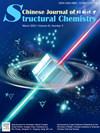Highly active transition metal phosphides for urea oxidation: Design strategies, application advances, and perspectives
IF 10.3
4区 化学
Q1 CHEMISTRY, INORGANIC & NUCLEAR
引用次数: 0
Abstract
In recent years, the discharge of urea-containing wastewater from industrial and domestic sources has posed a continuing threat to aquatic ecosystems and human health. In this context, the urea oxidation reaction (UOR) has attracted significant attention due to its low thermodynamic potential of 0.37 V (vs. RHE). Compared with oxygen evolution reaction (OER), this reaction can significantly reduce the energy consumption of electrolysis while realizing wastewater treatment, and has the dual functions of hydrogen energy preparation and wastewater purification. However, UOR involves complex six-electron transfer and intermediate adsorption/desorption processes, resulting in slow reaction kinetics. Therefore, the development of economical and efficient catalysts has become a research focus, among which transition metal phosphides (TMPs) stand out due to their low cost, excellent activity and adjustable electronic structure. Compared with other non-noble metal systems, TMPs have unique electronic structure and surface properties that can adsorb and activate urea molecules more efficiently. However, there is still a lack of systematic reviews on TMP catalysts at present. Therefore, this review aims to deeply and systematically elaborate the design strategies of TMP catalysts and their applications in UOR, thoroughly discuss the current progress, challenges and future directions, and provide theoretical support and design ideas for the development of a new generation of efficient and stable UOR catalysts.

尿素氧化用高活性过渡金属磷化物:设计策略、应用进展与展望
近年来,工业和家庭排放的含尿素废水对水生生态系统和人类健康构成持续威胁。在这种情况下,尿素氧化反应(UOR)由于其0.37 V(相对于RHE)的低热力学势而引起了极大的关注。与析氧反应(OER)相比,该反应在实现废水处理的同时显著降低电解能耗,具有制备氢能和净化废水的双重功能。然而,UOR涉及复杂的六电子转移和中间吸附/脱附过程,导致反应动力学缓慢。因此,开发经济高效的催化剂成为研究热点,其中过渡金属磷化物(TMPs)以其低廉的成本、优异的活性和可调节的电子结构而备受关注。与其他非贵金属体系相比,TMPs具有独特的电子结构和表面性质,可以更有效地吸附和激活尿素分子。然而,目前对TMP催化剂的研究还缺乏系统的综述。因此,本文旨在深入系统地阐述TMP催化剂的设计策略及其在UOR中的应用,深入探讨目前的研究进展、面临的挑战和未来的发展方向,为开发新一代高效稳定的UOR催化剂提供理论支持和设计思路。
本文章由计算机程序翻译,如有差异,请以英文原文为准。
求助全文
约1分钟内获得全文
求助全文
来源期刊

结构化学
化学-晶体学
CiteScore
4.70
自引率
22.70%
发文量
5334
审稿时长
13 days
期刊介绍:
Chinese Journal of Structural Chemistry “JIEGOU HUAXUE ”, an academic journal consisting of reviews, articles, communications and notes, provides a forum for the reporting and discussion of current novel research achievements in the fields of structural chemistry, crystallography, spectroscopy, quantum chemistry, pharmaceutical chemistry, biochemistry, material science, etc. Structural Chemistry has been indexed by SCI, CA, and some other prestigious publications.
 求助内容:
求助内容: 应助结果提醒方式:
应助结果提醒方式:


